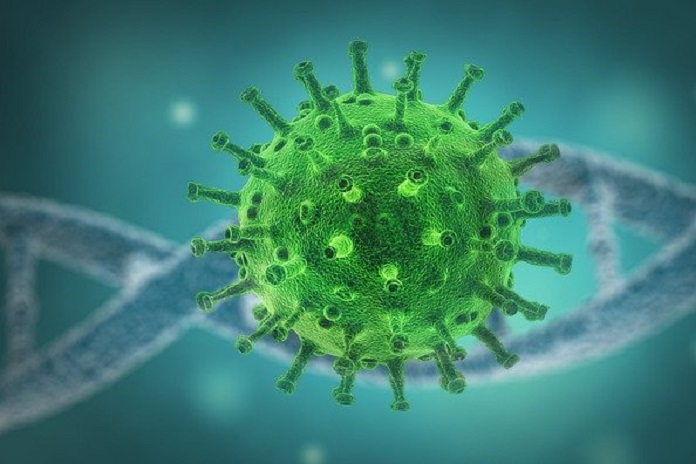The SARS-CoV-2 virus can live on surfaces for up to three days and in the air for up to three hours.1 Using UV light to disinfect surfaces has received significant media attention due to the recent pandemic.
But how safe is this method, how useful is UV radiation when it comes to killing viruses and bacteria, and does this depend on proximity to the surface, or whether the pathogen is aerosolized?
It is important to first understand the different spectrums of UV light. These are UV-A (320–400 nm), UV-B (280–320 nm), and UV-C (200-280nm). The shorter the wavelength, the more damaging the radiation. However, UV-C and most UV-B light is filtered by the ozone layer.2 The majority of UV light that reaches the earth’s surface is UV-A light, which is responsible for the majority of damaging effects on the skin, including sunburn and aging.
UV light to disinfect – UV-C
UV-C light has been used for many years as a method of disinfecting surfaces, water, and air. UV-C light is absorbed by DNA and RNA molecules and damages their structure. In the case of viruses this would inactivate them rendering them incapable of replicating and therefore blocking infection.
Safety precautions are essential when using UV light to disinfect. UV-C light is extremely dangerous as it can cause significant burns and skin cancer. These wavelengths are extremely dangerous to the eyes and can cause severe and permanent damage.
Use of UV-C to inactivate coronaviruses
A study investigated the effects of a UV-C disinfection system on the MERS coronavirus. The study found that exposing the virus to UV-C disinfection reduced the amount of virus by over 99% within ten minutes. The researchers do, however, stress that this method of disinfection should be used together with conventional hard-surface cleaning methods, rather than a replacement for standard cleaning practices.3
Another study found that exposing SARS coronavirus to UV-C light was able to induce some inactivation at only one minute, which increased as exposure time increased – after six minutes they reported a 400-fold reduction in infectious virus.4 Maximal effect was seen at the 15-minute timepoint, after which there was no longer any detectable virus present. These effects were recorded with UV-C disinfection at a distance of 3cm, whereas, a study that investigated the effects of UV-C light on SARS coronavirus at a greater distance (80cm) reported that virus inactivation occurred after an hour of light exposure,5 which may be a difference that is attributable to distance from UV-C light.4
In an effort to investigate the potential of UV-C disinfection techniques against aerosolized coronavirus, researchers used nebulization to simulate respiratory viral aerosols and exposed them to UV light.6 The researchers found that disinfecting aerosols with 254nm UV-C radiation was effective. They also reported that aerosolized viral particles were more susceptible to UV treatment compared to water-borne virus particles.
Although studies specifically assessing the effectiveness of UV-C disinfection methods against SARS-CoV-2, according to the International Ultraviolet Association, “similar results can be expected when treating COVID-19’s virus, SARS-CoV-2.”7
The studies that are currently available for SARS-CoV-2 have specifically addressed whether UV light can be used to disinfect masks, which would enable their re-use. These studies suggest that under specific circumstances, using UV light to disinfect N95 respirator masks was an effective method.8,9 Prolonging the use of personal protective equipment, such as masks, is important due to the critical shortage of supplies during the current pandemic.
To purchase UV lamps or a range of personal protective equipment, visit www.medofsupply.com
References:
- N van Doremalen, et al. Aerosol and surface stability of HCoV-19 (SARS-CoV-2) compared to SARS-CoV-1. The New England Journal of Medicine. DOI: 10.1056/NEJMc2004973 (2020).
- World Health Organization. Ultraviolet radiation and health. Available at: https://www.who.int/uv/uv_and_health/en/
- Bedell K, Buchaklian AH, Perlman S. Efficacy of an Automated Multiple Emitter Whole-Room Ultraviolet-C Disinfection System Against Coronaviruses MHV and MERS-CoV. Infect Control Hosp Epidemiol. 2016;37(5):598‐599. doi:10.1017/ice.2015.348
- Darnell ME, Subbarao K, Feinstone SM, Taylor DR. Inactivation of the coronavirus that induces severe acute respiratory syndrome, SARS-CoV. J Virol Methods. 2004;121(1):85‐91. doi:10.1016/j.jviromet.2004.06.006
- Duan S.-M., Zhao X.-S., Wen R.-F., Huang J.-J., Pi G.-H., Zhang S.-X., Han J., Bi S.-L., Ruan L., Dong X.-P., and SARS Research Team Stability of SARS coronavirus in human specimens and environment and its sensitivity to heating and UV irradiation. Biomed. Environ. Sci. 2003;16:246–255.
- Walker, CM, Ko, GP. Effect of Ultraviolet Germicidal Irradiation on Viral Aerosols. Environ. Sci. Technol. 2007, 41, 15, 5460-5465. June 21, 2007 https://doi.org/10.1021/es070056u
- International Ultraviolet Association. UV Disinfection for COVID-19. Available at: http://www.iuva.org/IUVA-Fact-Sheet-on-UV-Disinfection-for-COVID-19
- Cadnum JL, Li DF, Redmond SN, John AR, Pearlmutter B, Donskey CJ. Effectiveness of Ultraviolet-C Light and a High-Level Disinfection Cabinet for Decontamination of N95 Respirators. Pathog Immun. 2020;5(1):52‐67. Published 2020 Apr 20. doi:10.20411/pai.v5i1.372
- Liao L, Xiao W, Zhao M, et al. Can N95 Respirators Be Reused after Disinfection? How Many Times? [published online ahead of print, 2020 May 5]. ACS Nano. 2020;acsnano.0c03597. doi:10.1021/acsnano.0c03597
Image by PIRO4D from Pixabay



